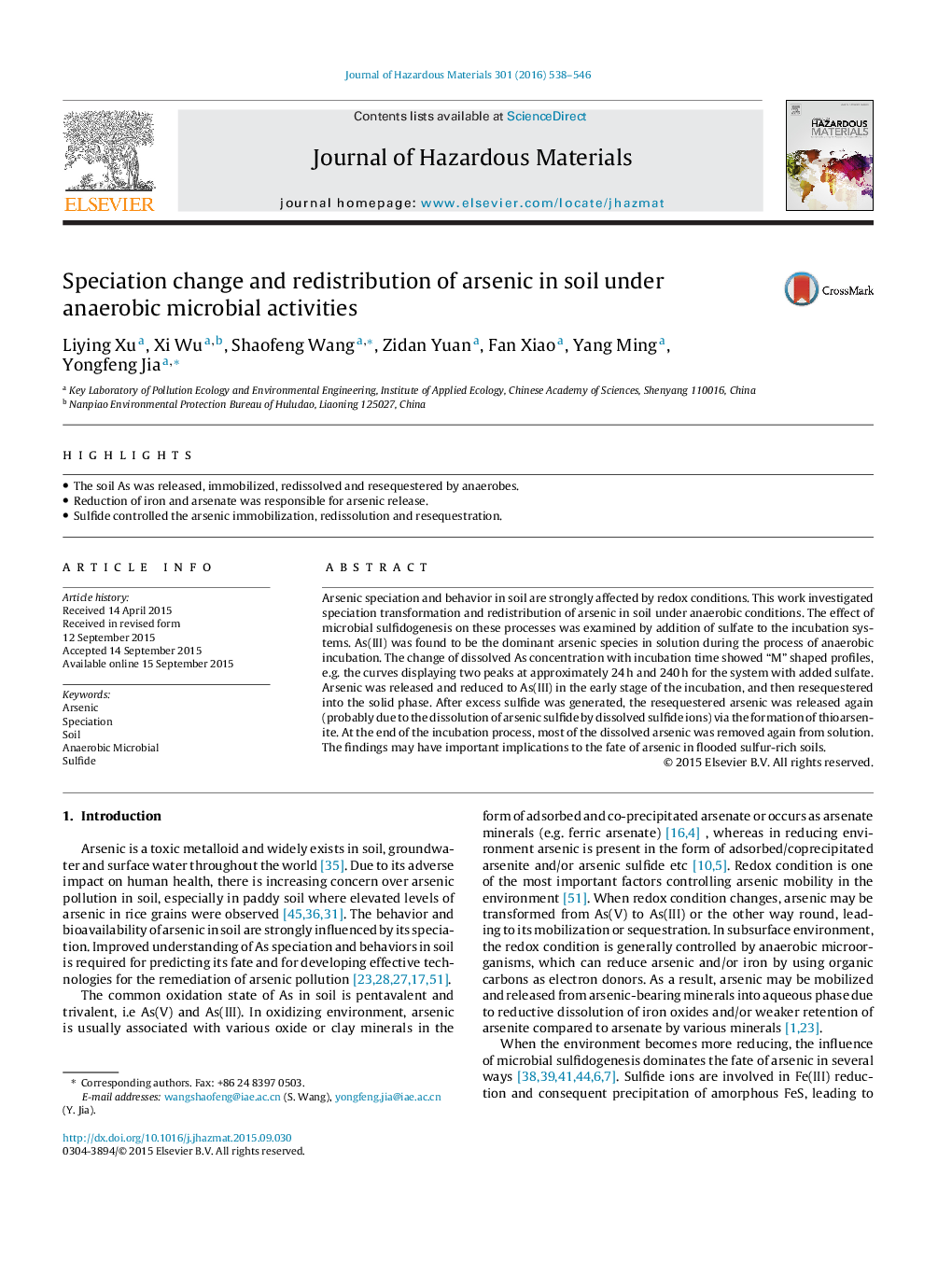| Article ID | Journal | Published Year | Pages | File Type |
|---|---|---|---|---|
| 575825 | Journal of Hazardous Materials | 2016 | 9 Pages |
Abstract
Arsenic speciation and behavior in soil are strongly affected by redox conditions. This work investigated speciation transformation and redistribution of arsenic in soil under anaerobic conditions. The effect of microbial sulfidogenesis on these processes was examined by addition of sulfate to the incubation systems. As(III) was found to be the dominant arsenic species in solution during the process of anaerobic incubation. The change of dissolved As concentration with incubation time showed “M” shaped profiles, e.g. the curves displaying two peaks at approximately 24Â h and 240Â h for the system with added sulfate. Arsenic was released and reduced to As(III) in the early stage of the incubation, and then resequestered into the solid phase. After excess sulfide was generated, the resequestered arsenic was released again (probably due to the dissolution of arsenic sulfide by dissolved sulfide ions) via the formation of thioarsenite. At the end of the incubation process, most of the dissolved arsenic was removed again from solution. The findings may have important implications to the fate of arsenic in flooded sulfur-rich soils.
Keywords
Related Topics
Physical Sciences and Engineering
Chemical Engineering
Chemical Health and Safety
Authors
Liying Xu, Xi Wu, Shaofeng Wang, Zidan Yuan, Fan Xiao, Yang Ming, Yongfeng Jia,
